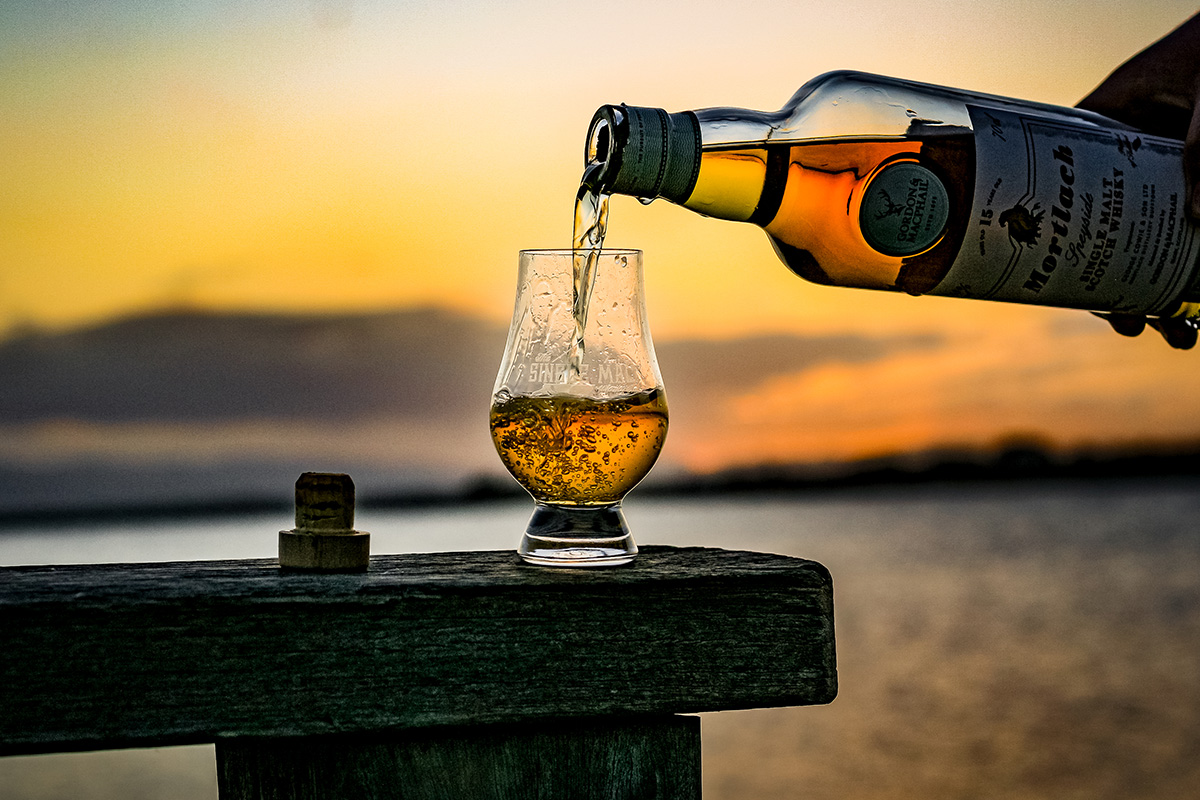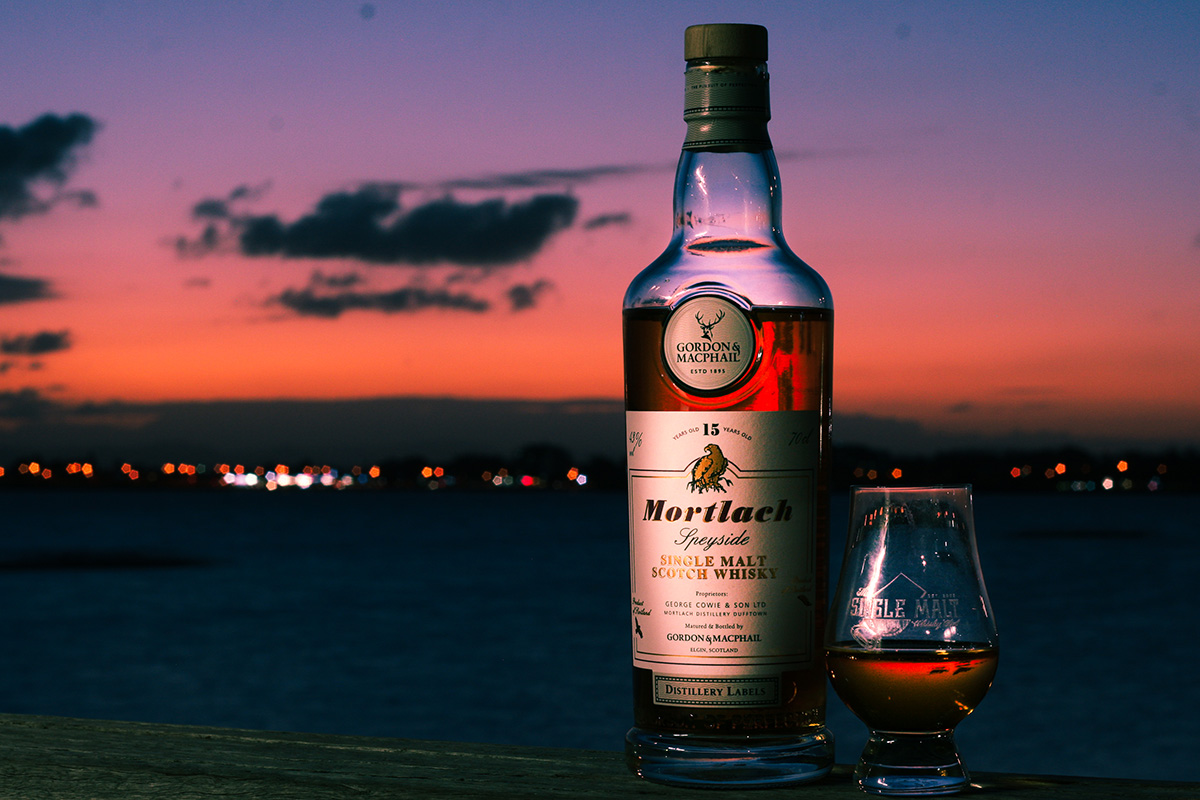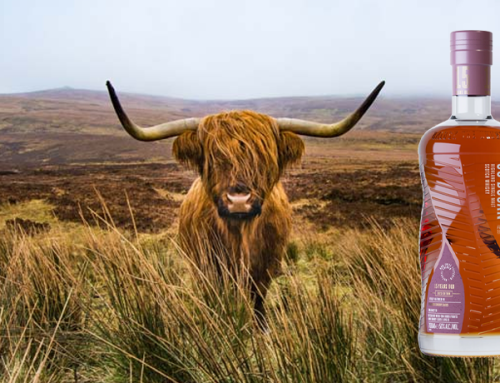Welcome to the best kept secret in Scottish whisky! An almost 200 year-old distillery, founded on the site of an illicit still, and the oldest in Dufftown that uses it’s own, idiosyncratic ‘2.81 times distillation process’ to produce a whisky that doesn’t rely on peat to make it huge. Add to that this whisky is also exclusively aged in first fill and refill sherry casks! That’s right – for September we have a bona fide sherry-bomb – the Mortlach 15 year old from Gordon & MacPhails ‘Distillery Labels’ collection.
Mortlach’s bold flavour profile has seen it dubbed “The Beast of Dufftown” and is said to exist somewhere in between mellow and smoky. In a region renowned for its mellower, gentler ‘whisky-vibe’, Mortlach stands out for it’s robust, muscular and rich character. Enjoy!
Mortlach’s celebrated characteristic ‘biglyness’ (to paraphrase a current world leader) is the result of two factors. First is the unique ‘2.81x’ distillation method and the second is the ‘worm-tub’ condensers used in the production.
The ‘2.81x’ distillation is the result of clever utilisation of the 6 stills (3 wash and 3 spirit stills). It’s a difficult to explain concept in words – but makes much more sense when shown in a diagram.
The basic gist of the process is some spirit is effectively 3 times distilled, and some is 2 times distilled. The combination of these in specific amounts creates a (mathematical) 2.81 distillation figure. Now I know that explanation is going to infuriate some of our members with its obvious shallowness – but there are many explanations much better than I could ever pen available on the interweb. And I’m not going to even go near the ‘is it 2.81 times … or actually 2.7 times distilled?’ debate that rages amongst some of the more mathematically minded whisky drinkers out there. The effect of the process (and the most important part), however – is to produce a new make spirit which has plenty of savoury, meaty ‘oomph’.
This ‘2.81 distillation’ is also paired with a ‘worm tub’ condenser. The relevance of the worm tub is that it contains less copper for the new make to interact with. And the new-make/copper interaction removes heavy, sulphuric compounds. Less copper in the ‘worm tubs’ means less of this interaction, thus more of these flavour compounds. These notes are what give the Mortlach 15 year old spirit it’s ‘bigger, meatier than your usual Speyside whisky’ character.
Ok, so onto the most important part of the 2.81 times distillation process … what does the Mortlach 15 year old taste like?
OUR TASTING NOTES
Colour: Bright Gold
Nose: Sultanas, stewed fruit, citrus and a malty punch
Palate: Nice syrupy mouthfeel. Lots of stewed fruit salad, biscuit spices and some vanilla.
Finish: Long and warming with waves of fruit and pepper.




FROM THE DISTILLERS
Nose: Distinctly malty initially with fresh aromas of a woodland hedgerow, delicate Sherry notes linger and weave with rich indulgent toffee, sweet liquorice, and orange marmalade.
Taste: Reminiscent of a black forest cake: the initial sweetness develops into fruity blackcurrant jam, maraschino cherry, and creamy vanilla. Freshly peeled orange notes add a fresh lift.
Finish: Well rounded: hints of candied citrus fruits and oak complement the lingering malty edge.
ABOUT THE DISTILLERY
Officially, the Mortlach Distillery began operation in 1823. I say ‘officially’ because until then, a distillery was already in operation on the site, albeit illegally. The Excise Act in 1823 allowed many formerly-illicit distilleries to become licenced and produce whisky legally. Mortlach is one such distillery built on the site of an illicit still. The name ‘Mortlach’ means ‘bowl-shaped valley’.
From its ‘legal’ founding, the distillery experienced a ‘slow start’ and ownership passed through many hands until in 1867, part-owner George Cowie (an accomplished engineer) takes full control of Mortlach, and the reputation of the Mortlach spirit begins its ascendancy. It’s praises are soon sung far and wide. George’s engineering background drives the continuous upgrading and improving of the distillery and all it’s systems.
“There is not perhaps a distillery in Scotland that has so many private customers as Mortlach from which spirits are sent not only over the three kingdoms to families, but to America, India, China and Australia, in all of which Mr. Cowie has customers who prefer his distillation to all others …” The Elgin Courant, 1868
In 1896 George’s son Alexander takes control of the distillery – and continues in his father’s footsteps by expanding business. In fact, he doubles the size of the distillery as well as building a railway line to service it. The railway line is still in use today as the ‘Strathpey Line’. Of interest, working alongside Alexander in this project was Charles Doig – inventor of the iconic ‘Doig Ventilator’ – better known as the ‘Pagoda Roof’!
In 1897, Alexander created the unique and very intricate 2.811 distillation process that is still used at Mortlach today. Used only by Mortlach Distillery, the 2.811 distillation method – combined with traditional Worm Tub condensers – creates the thick, rich, bold spirit character that Mortlach is famed for.
The distillery was completely rebuilt in 1964 – however, and very interestingly, the old stills were re-installed and not replaced in the revamp. Today, international booze giant Diageo own Mortlach. It continues to use Mortlach as the backbone of the Johnny Walker range of blended scotch whiskies.







